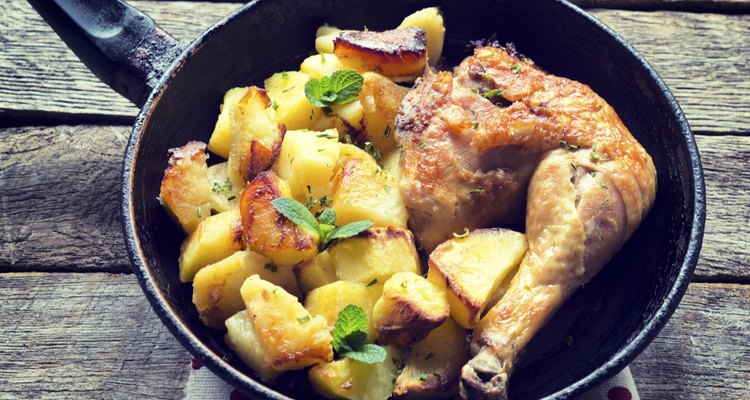
badmanproduction/iStock/Getty Images
Pan-cooked chicken is fast, simple and produces crispy-skinned chicken with a beautiful brown color. However, it can be labor intensive, requiring you to pay constant attention. Searing chicken first in a pan then transferring it to the oven to bake, also known as pan-roasting, produces juicy, flavorful chicken with a browned, crispy exterior. In addition to having the best of both worlds -- gently cooked chicken and browning -- pan-roasting minimizes the number of dishes needed as the sauce for the chicken can be made in the same pan.
Benefits of Searing and Baking
The high heat of pan-cooked chicken means it can be quite easy to overcook the outside of the meat before the inside is done. This especially is the case with bone-in pieces of chicken. Finishing the chicken in the oven frees up your stove top and allows the chicken to finish cooking at a lower temperature. It also is easier to keep chicken warm after it is done without overcooking the meat.
Marinades and Seasonings
The sear provides a lot of flavor to chicken. However, for flavor that penetrates more deeply, marinate the chicken between 20 minutes to 24 hours. Use a blend of lemon juice, the brine from a jar of feta cheese, olives, capers, garlic and olive oil for a Greek-Mediterranean inspired chicken dish. For something more basic, rub the chicken pieces with olive oil, garlic powder, paprika and salt before searing. Because of the high heat of the pan, dry rubs are not recommended for seared and baked chicken.
Searing Chicken
Use a heavy-bottomed, ovenproof pan such as a stainless-steel or cast-iron pan. Do not use a nonstick pan as you do not get as good of a sear. Choose a pan that can comfortably hold all of the chicken in one layer without crowding. If the cast-iron pan is well seasoned, you do not need extra oil. However, in general, you need some oil. Add a thin layer of oil to the pan and heat on high until the oil is shimmering. Pat dry your chicken -- even if it is marinated -- and place it skin-side down on the pan. Add as many pieces as possible without crowding the chicken. You may need to sear the chicken in batches if you have a lot. Leave the meat alone for two minutes before checking to see if it is well browned; the skin will have crisped up. Flip over the chicken to sear the other side if you like, or set it aside on a plate and finish browning the other pieces.
Baking Chicken
Heat the oven to 350 degrees Fahrenheit while the pan is warming up. Once all of the chicken is seared and brown, arrange the meat -- skin or browned side up -- in the pan, pouring in any marinade you may wish to use. You also can place a layer of vegetables such as sliced fennel or potatoes at the bottom of the pan and put the chicken on top. Place the pan with the chicken on a center rack in the oven, uncovered. Roast the chicken until the internal temperature reads 165 F in the thickest part of the meat. If you are roasting chicken thighs and breast meat, test the temperature of the thighs for doneness. Serve the chicken with pan juices and fresh, crusty bread to sop up extra sauce. Leftovers can be sealed in a container or food-grade plastic bag and stored in the fridge for three to four days.
Related Articles

How to Marinate Roast Chicken

Can You Roast Whole Frying Chickens?
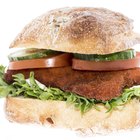
How to Cook Chicken Schnitzel
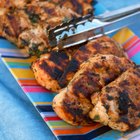
How to Pre-Bake Skinless Chicken Thighs ...
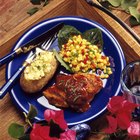
How to Bake Pre-Marinated BBQ Chicken

How to Bake Chicken Breast Without Oil
Can You Use a Baking Mix to Make Fried ...

How to Cook Crispy Chicken Strips

The Best Ways to Make a Baked Moist and ...
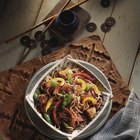
How to Cook Chicken Chunks in a Skillet

How to Cook Fried Drumettes

How to Broil Chicken on the Bone

How to Make Blackened Chicken
Roast Chicken in Enameled Cast Iron

How to Fry Bone in Chicken
How to Cook Chicken Pieces in an ...
Easy Fried Chicken Recipe

How to Par-Cook Chicken Before Frying

How to Make Chinese Chicken in a Slow ...
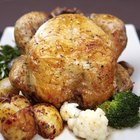
How to Smoke a Chicken in the Oven
References
Writer Bio
David Grimes has worked professionally as a chef since 2002, in settings as wide-ranging as a corporate caterer and as a sous chef in a Michelin-starred French restaurant. He has been writing about food since 2009 and published in "Time Out New York" and "Food and Wine" magazine.
Photo Credits
badmanproduction/iStock/Getty Images